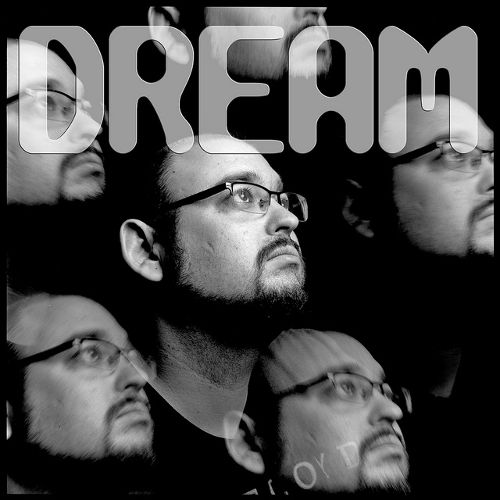3D Photography
|
People might think that 3D photography (or stereoscopy) is fairly new and only possible because of new technologies recently developped. In fact, it exists since the beginning of photography. Some cameras already had 2 lenses to make 2 images: one for the left eye, and one for the right eye. 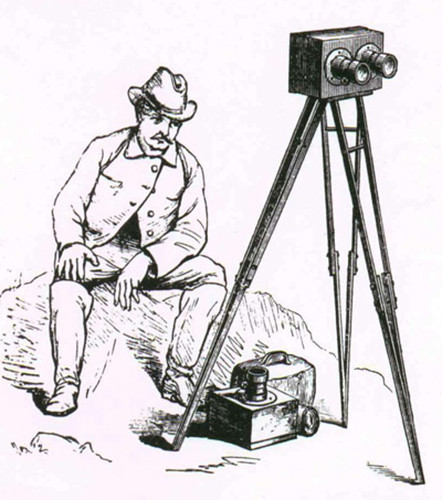 Stereo-photographer from the early days Stereocameras existed since the beginnings, and over time, many standards appeared, with many technologies. 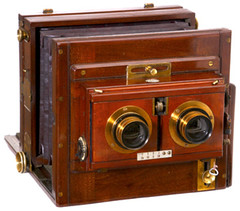
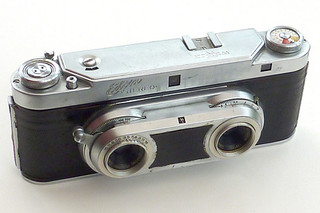
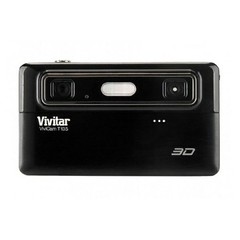 3D cameras over time Stereocards were greatly popularized around 1851 by the Queen Victoria. At that time, people were looking at stereocards. 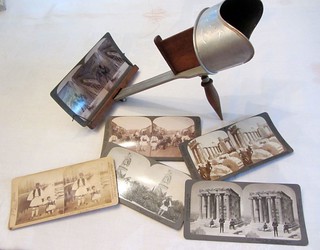
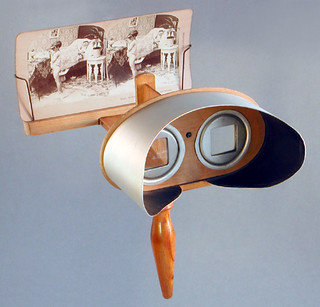 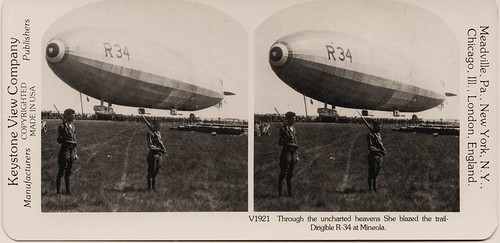 Stereocards Many other viewing aparatuses appeared over the years, like the more known "View-Master" 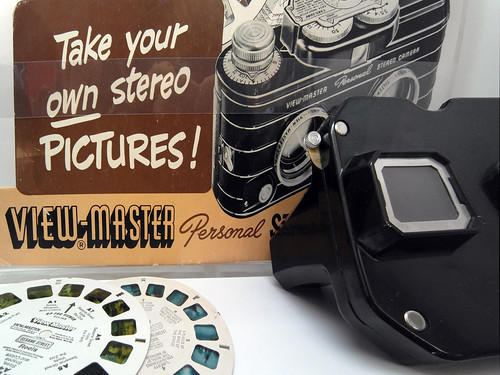 View-Master, one of many 3D photo standards. Easy recipe for 3D photographyIf you want to easily do some stereoscopy, I can share my recipe. First, you'll need some 3D glasses, like one of these:  3D glasses (for red/blue anaglyphs) We are going to make anaglyphs which are one of the simplest way to do 3D photography (red/blue stereoscopy). Even if the colors can be somewhat shifted, the results are still quite impressive.  Autoportrait, an example of an anaglyph You do not need a 3D camera to make 3D photo unless you are making photos of moving subjects. If your subject does not move, then what you do is put you camera on a tripod, make a first photo, then move the camera a bit on the right or left and take a second photo. You need 2 photos of the same subject from 2 different positions, representing both eyes. 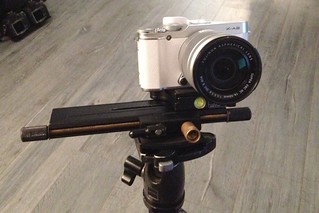 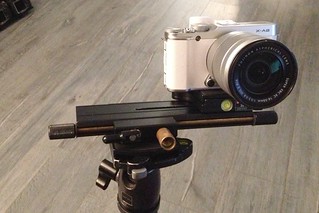 3D setup for static subjects, one camera and a sliding rail To achieve a good 3D effect, the distance between both images (between the 2 camera positions) varies according to the distance to the subject. The general rule is 1:100. The distance between camera positions is 1/100 of the distance to the subject. Honestly, when far away and for closeups, the numbers do not make sense anymore. I usually like to let more distance than necessary. 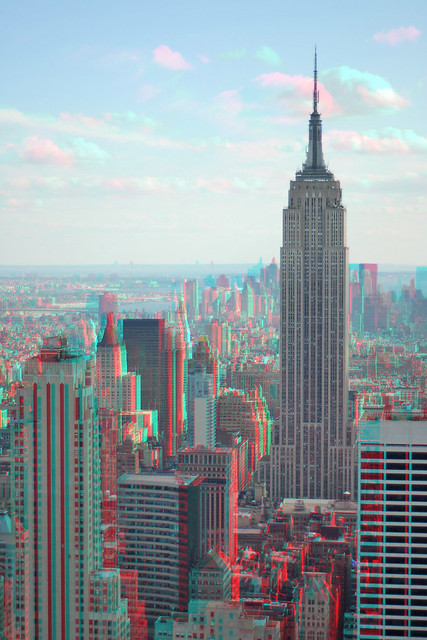 New-York City, distance between both photos: ~2 meters 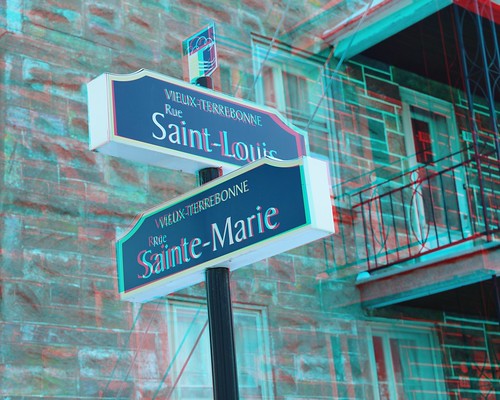 Street names, distance between both photos: ~15 centimeters 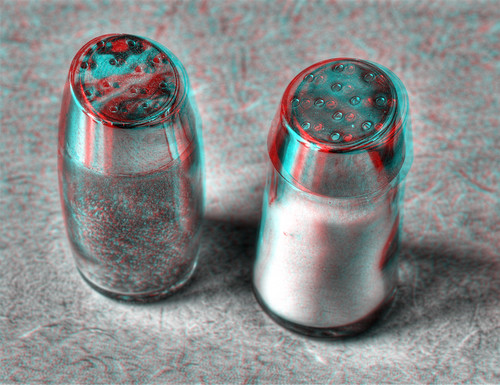 Salt and pepper, distance between both photos: ~2 centimeters If your subject is moving, then you need to take both photos at the same time. So you either need a special purpose 3D camera, or you need 2 cameras that you trigger at the same exact time. 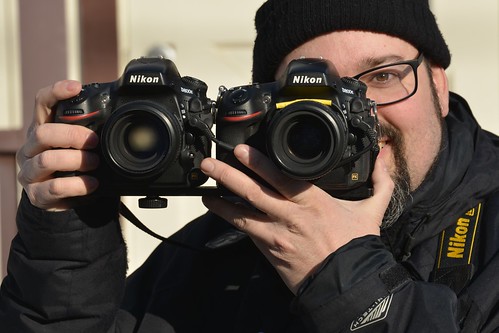 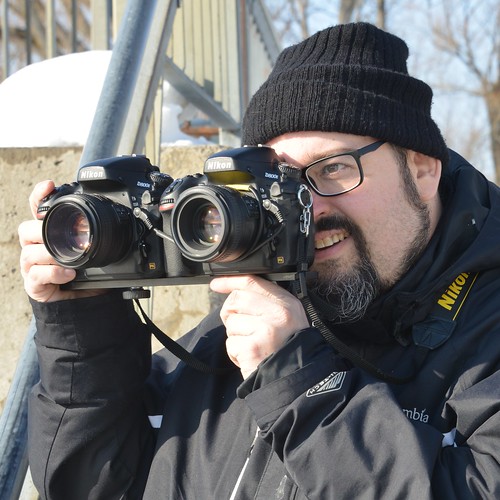 3D setup for dynamic subject, two synced cameras with identical lenses Here are a few examples: 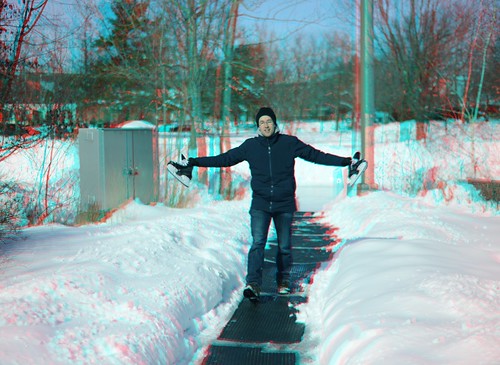 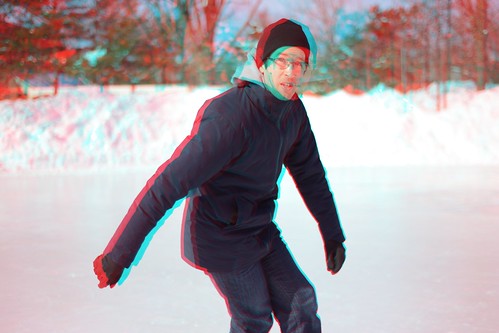 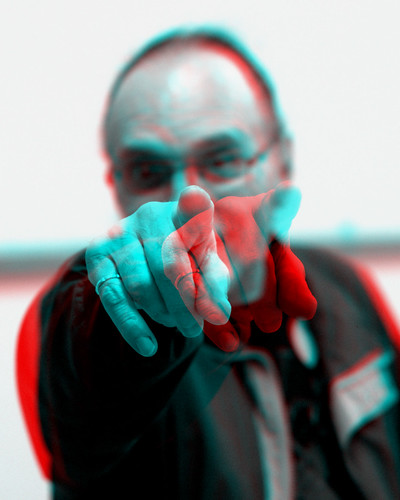 Examples of moving subject After you have taken the photos, you need to assemble them in pair. Identify which is the left and right eye views, then either use a specialized 3D software or simply use Photoshop / Gimp to bring the magic. There are many Videos about this on Youtube. Just remember that you will be using 2 different images as the source, and not a single image. Many videos are showing ways to "simulate" 3D using only one image, which is ridiculous when you do real stereoscopy :-) Thanks for being there!Eric Constantineau, small photographer in this big World  |
CONTACT
